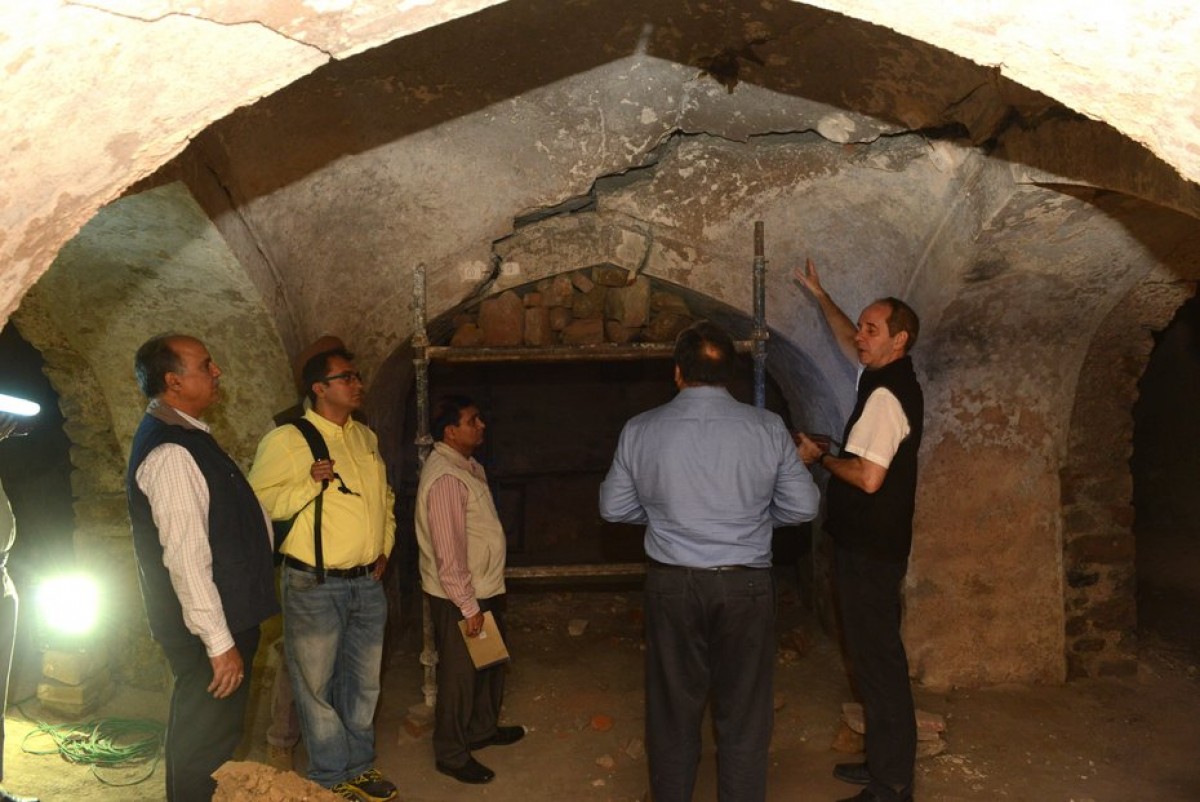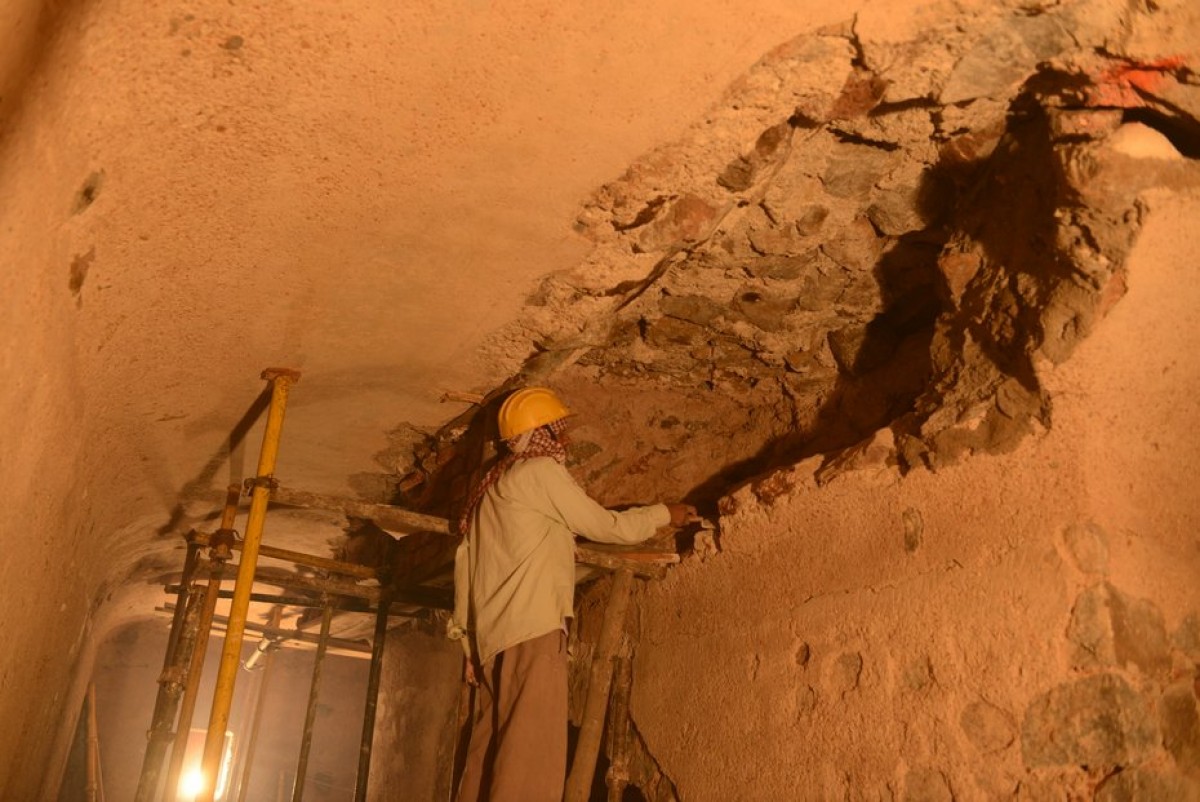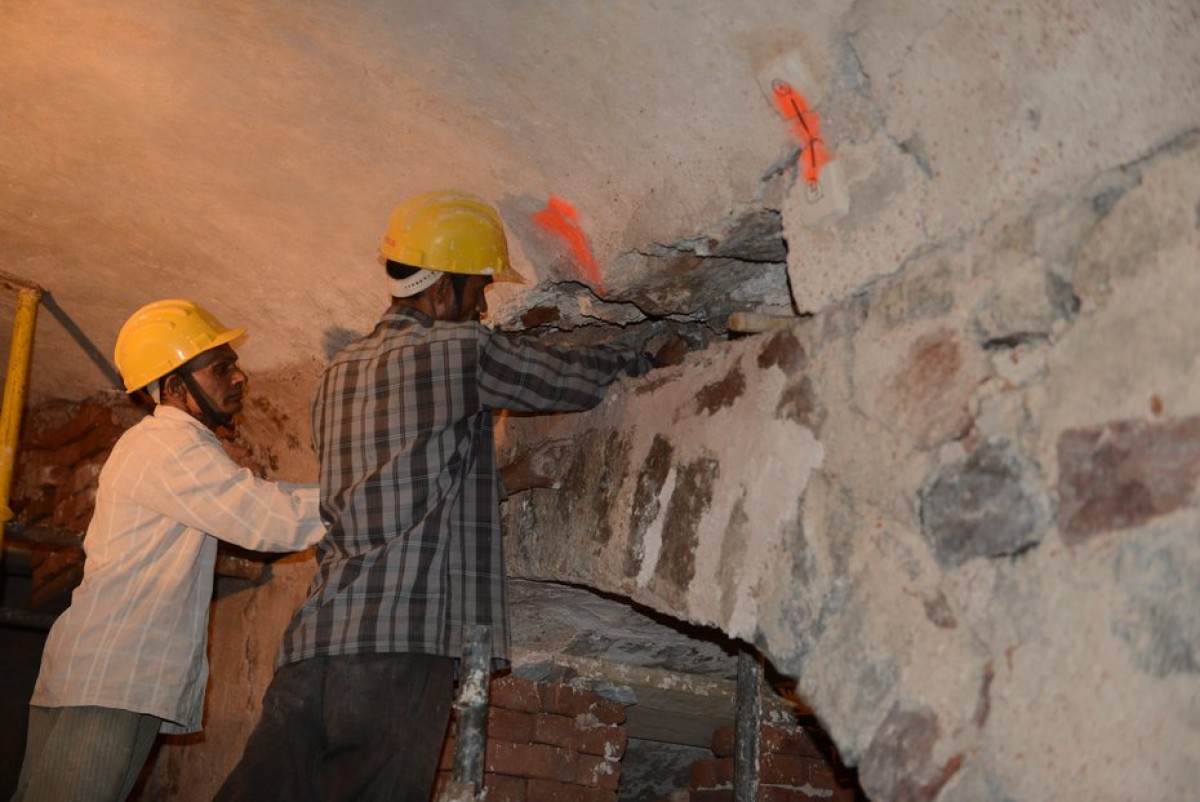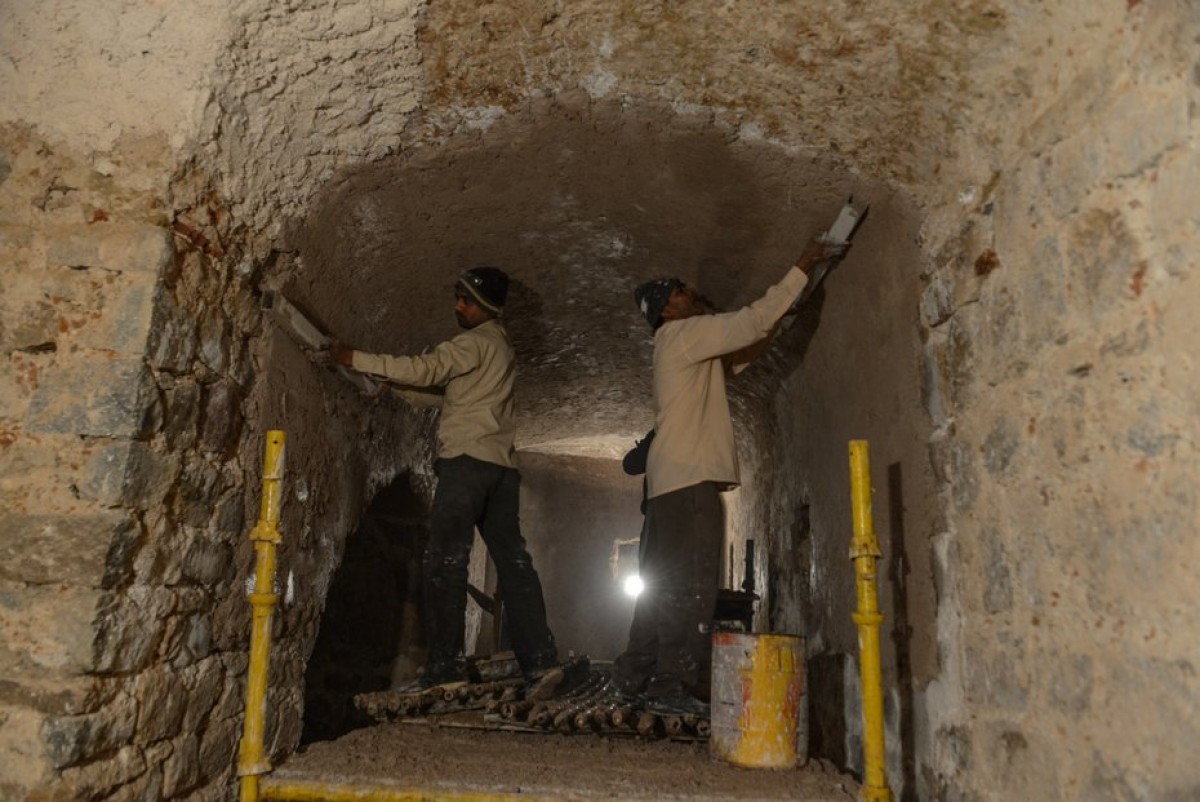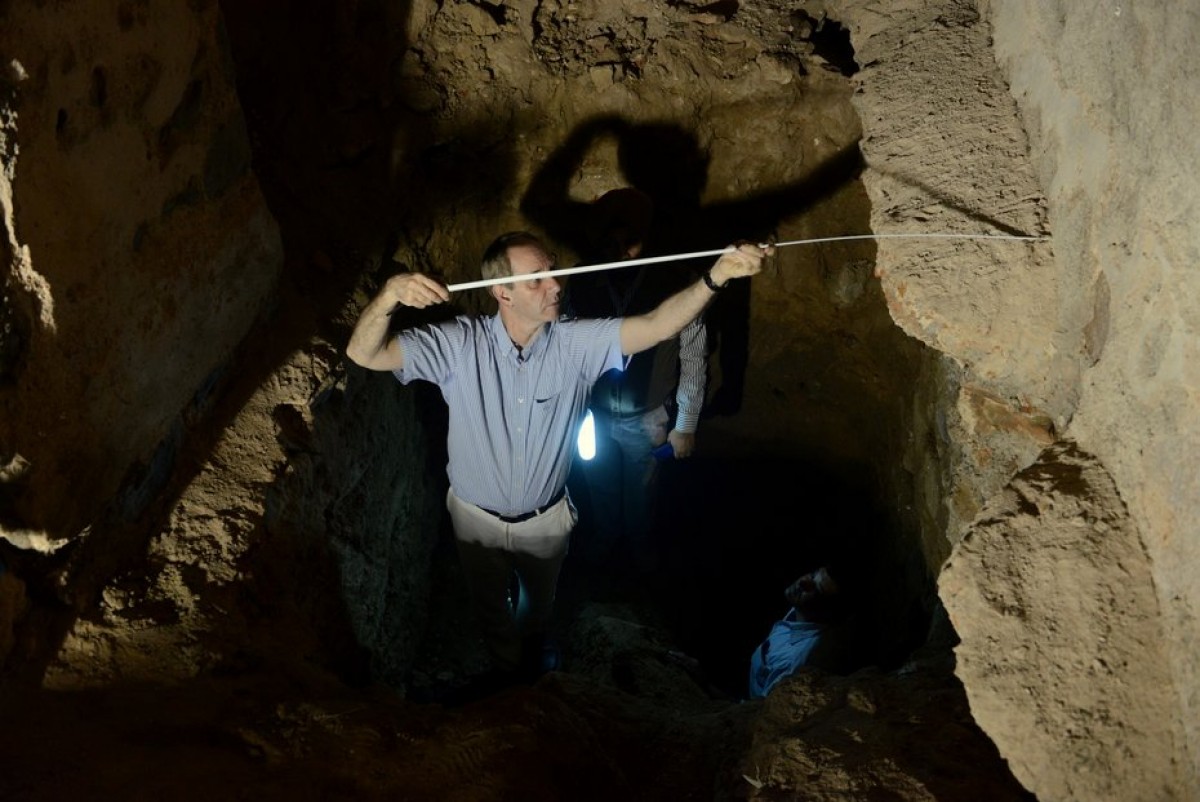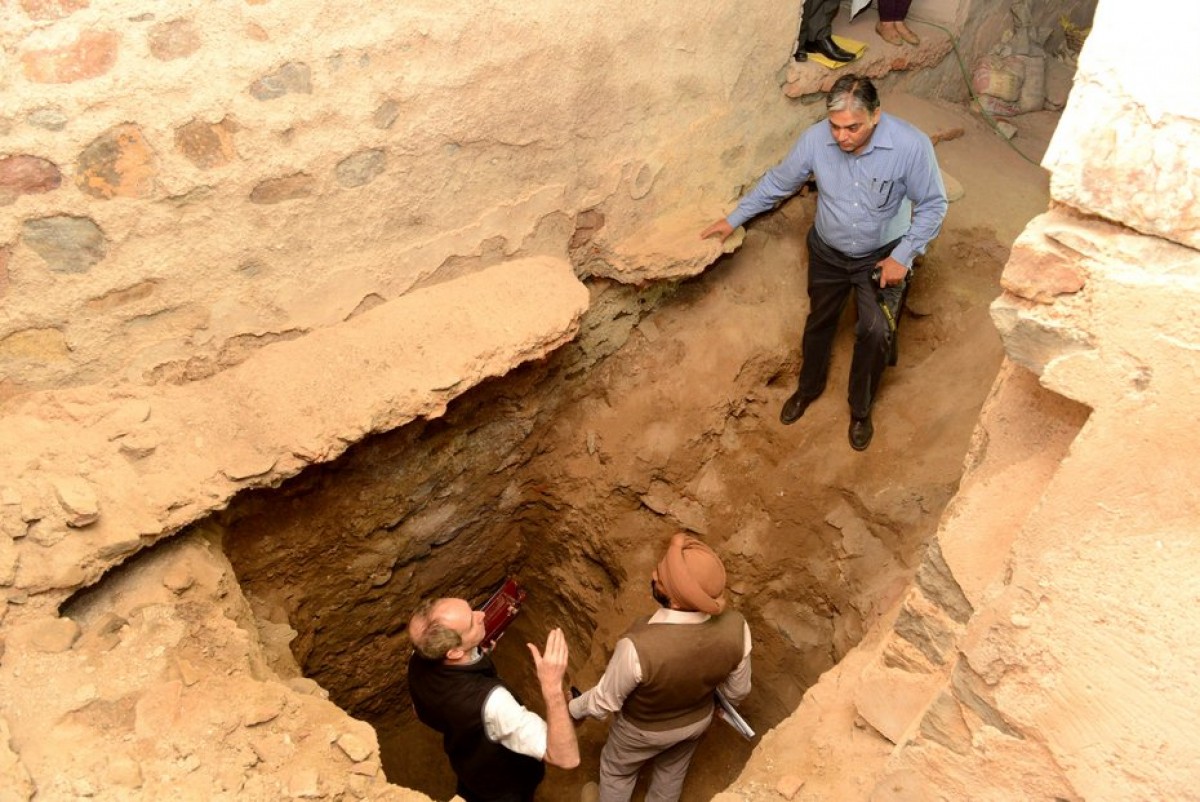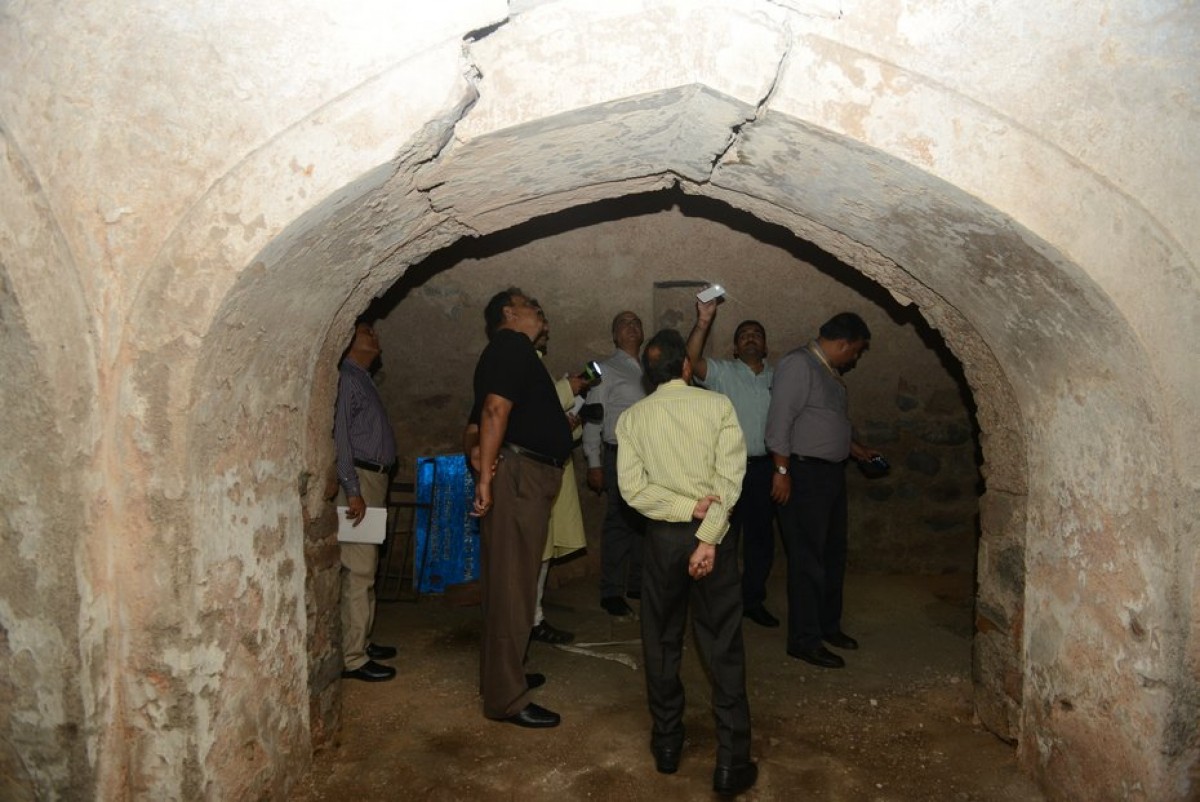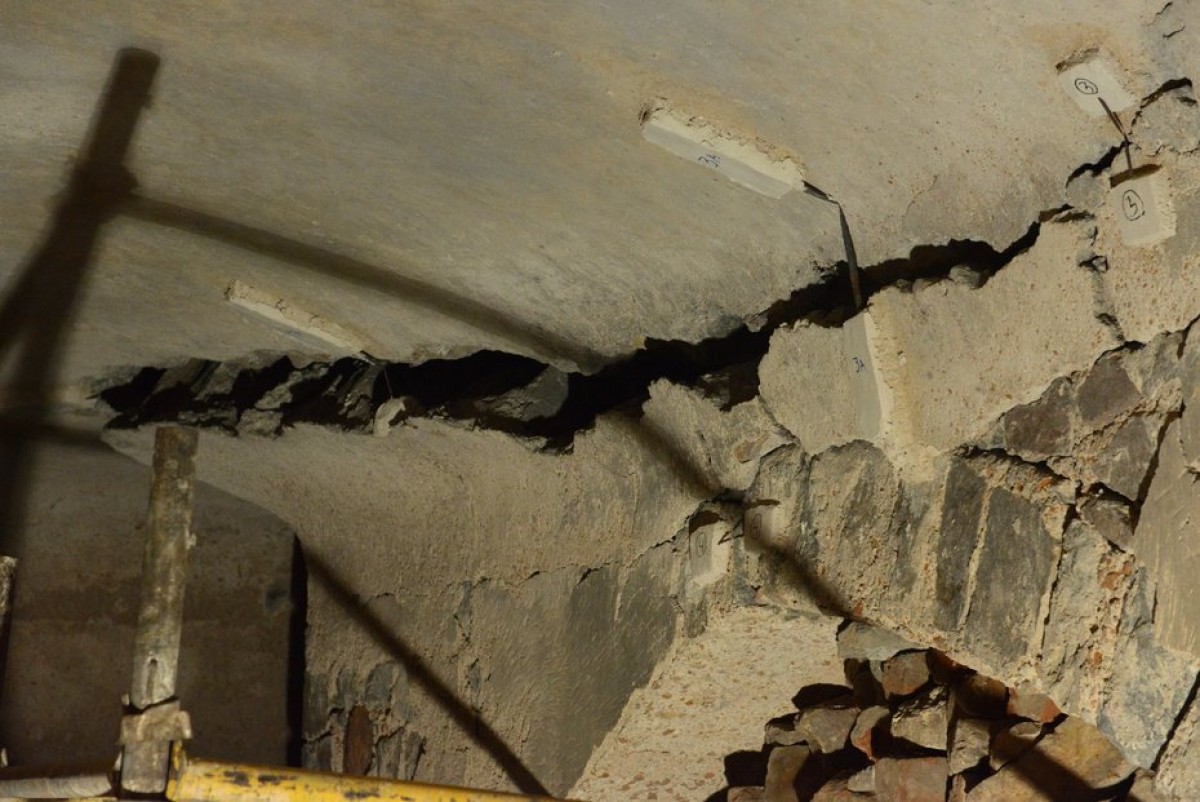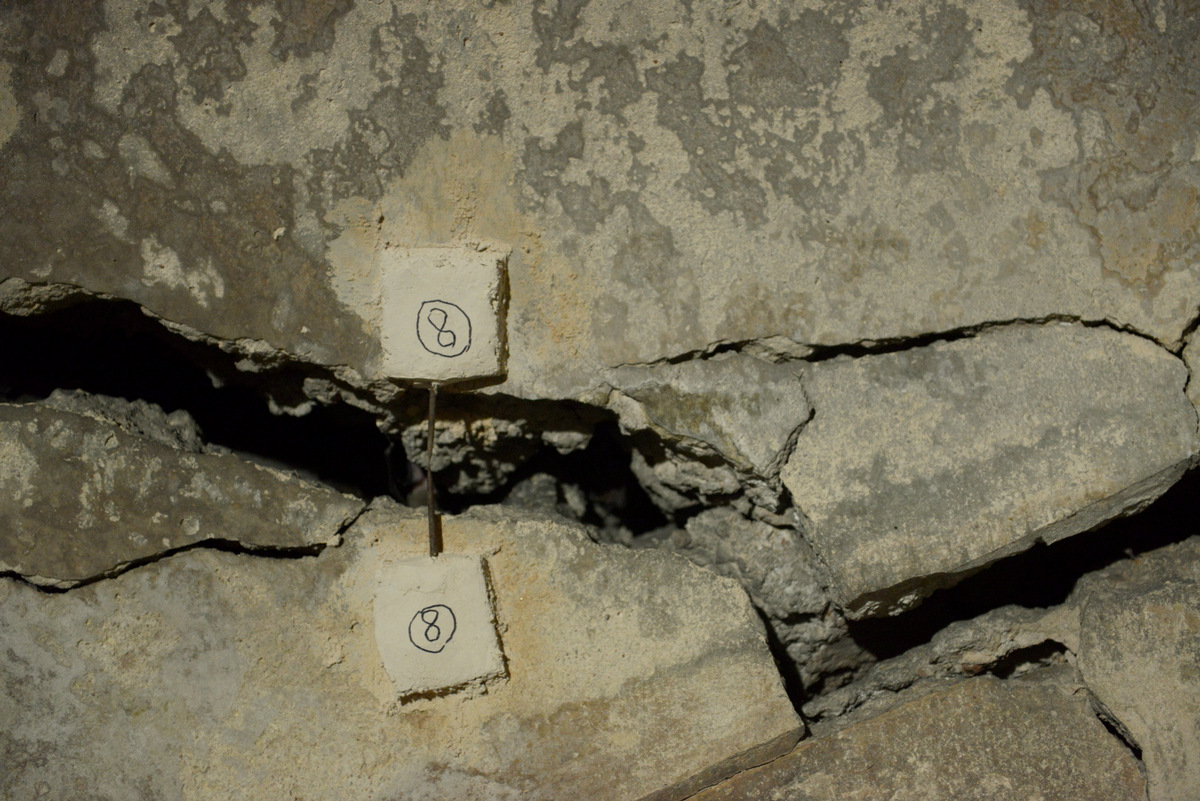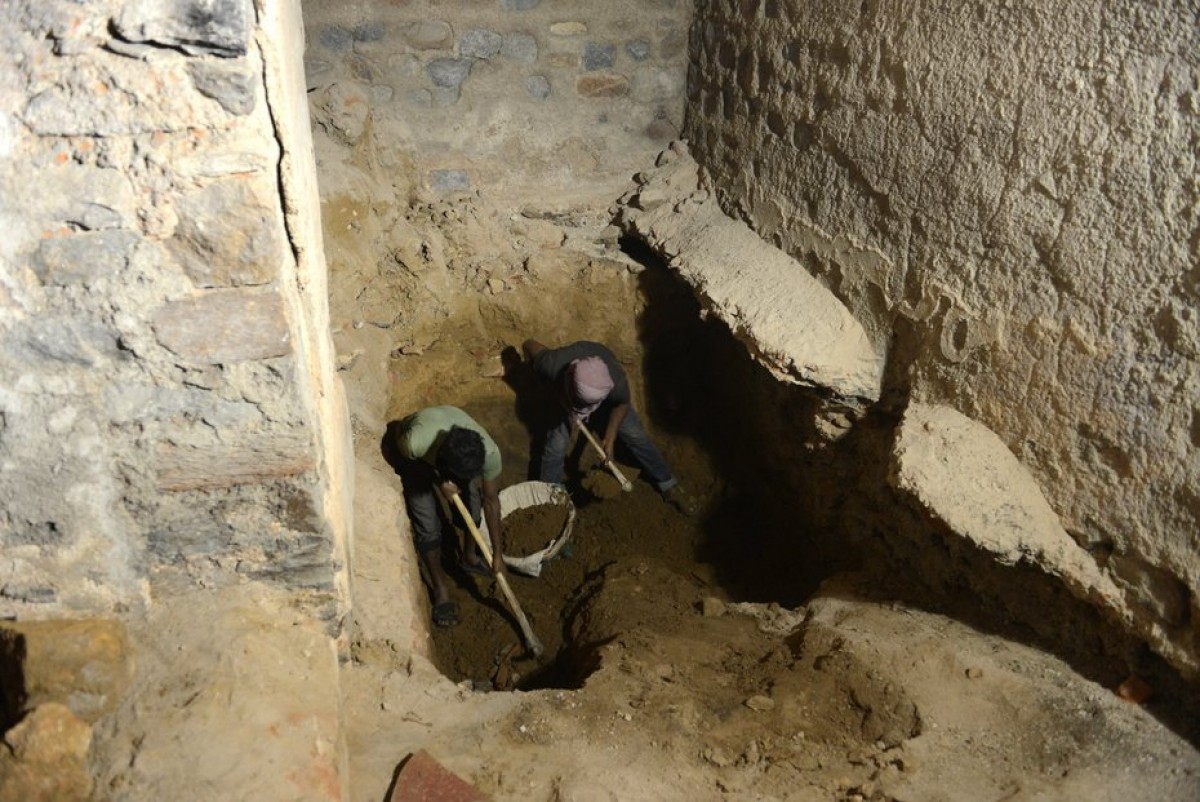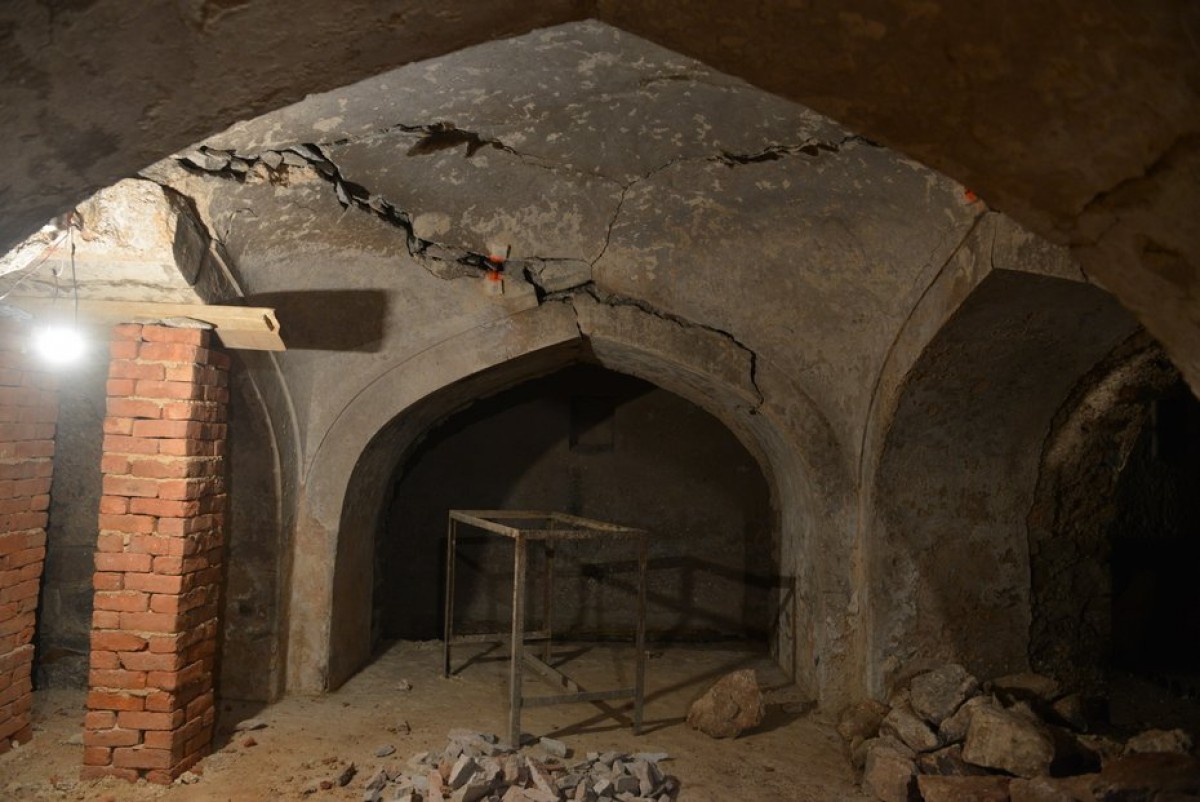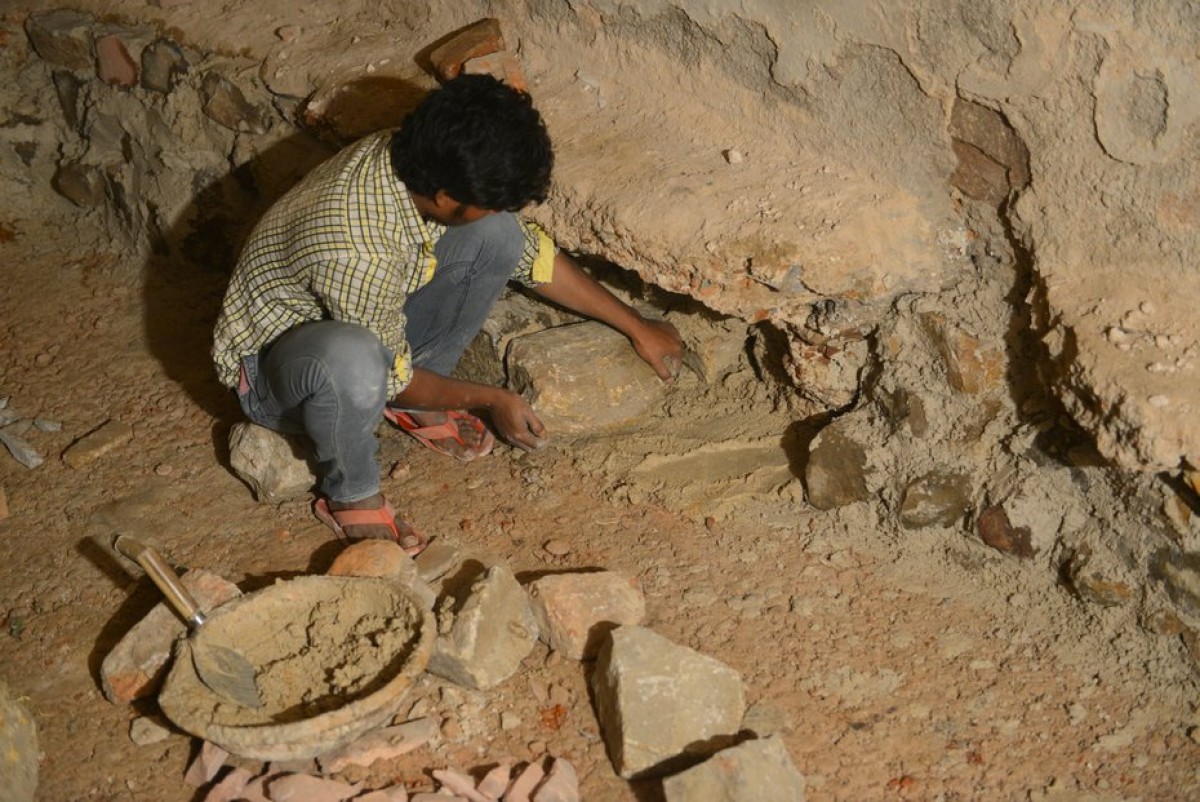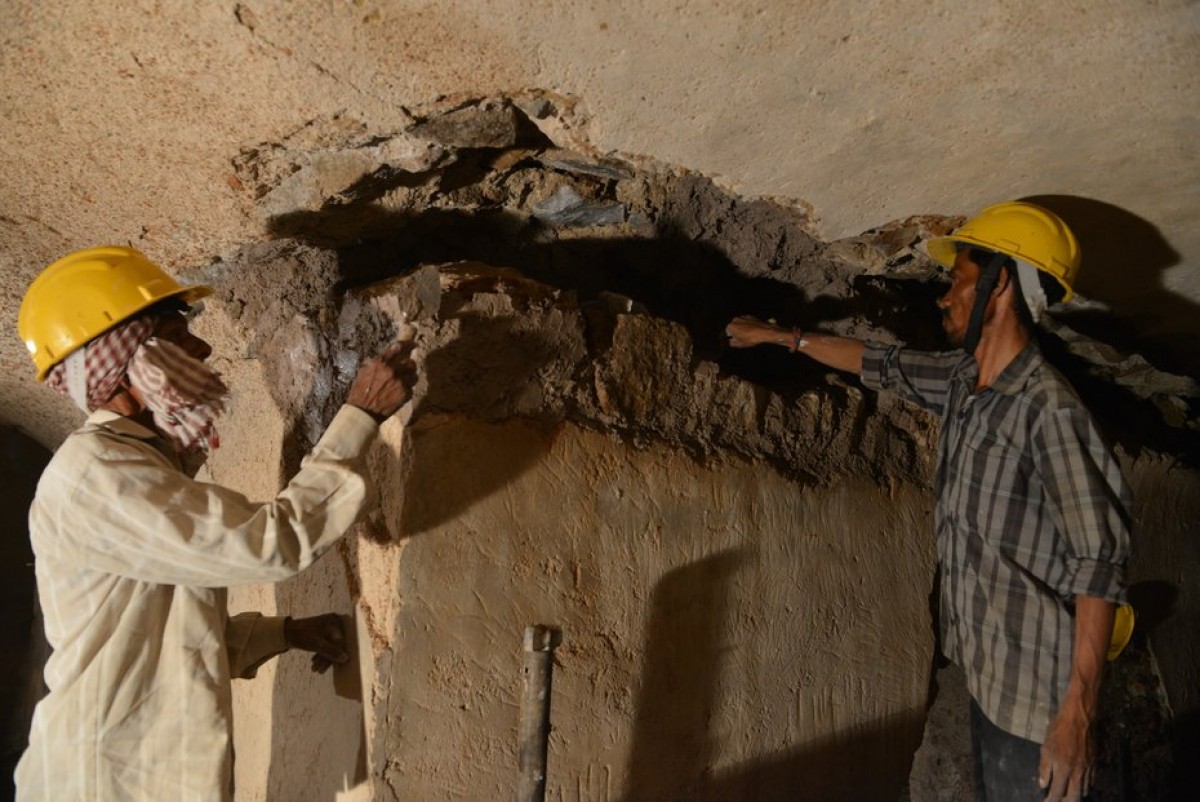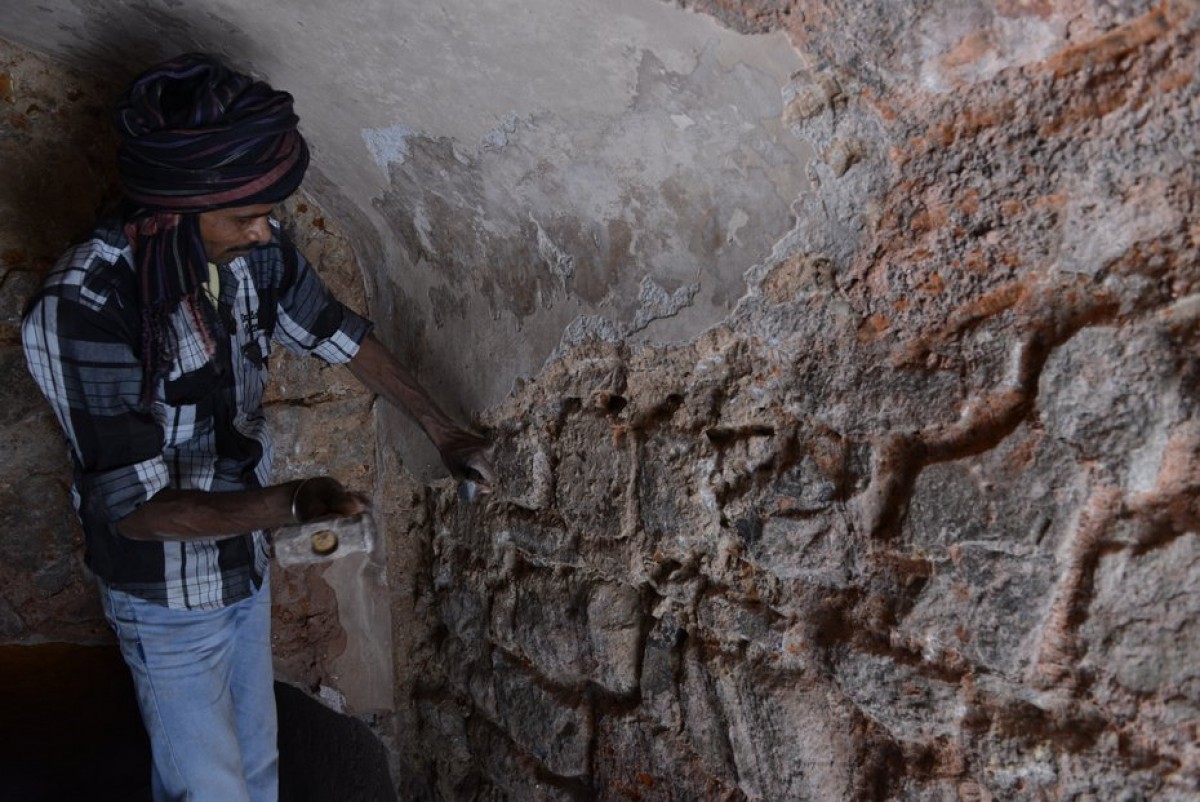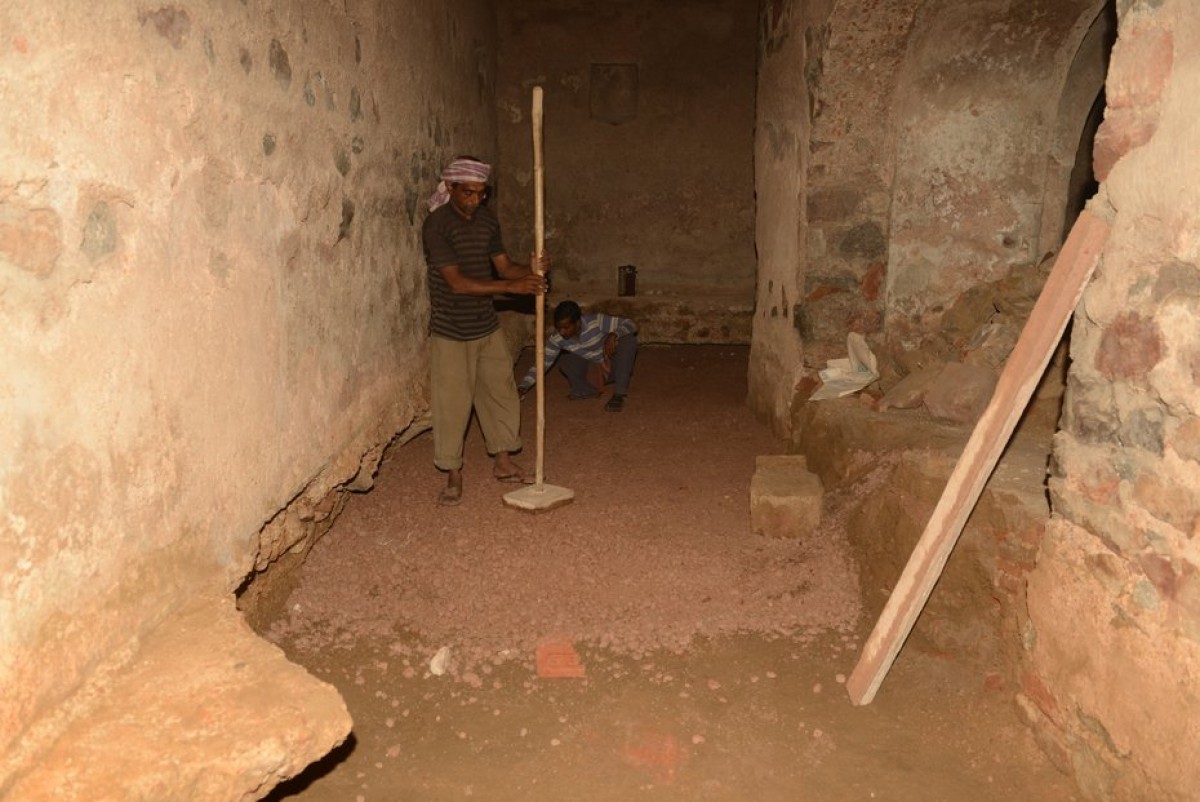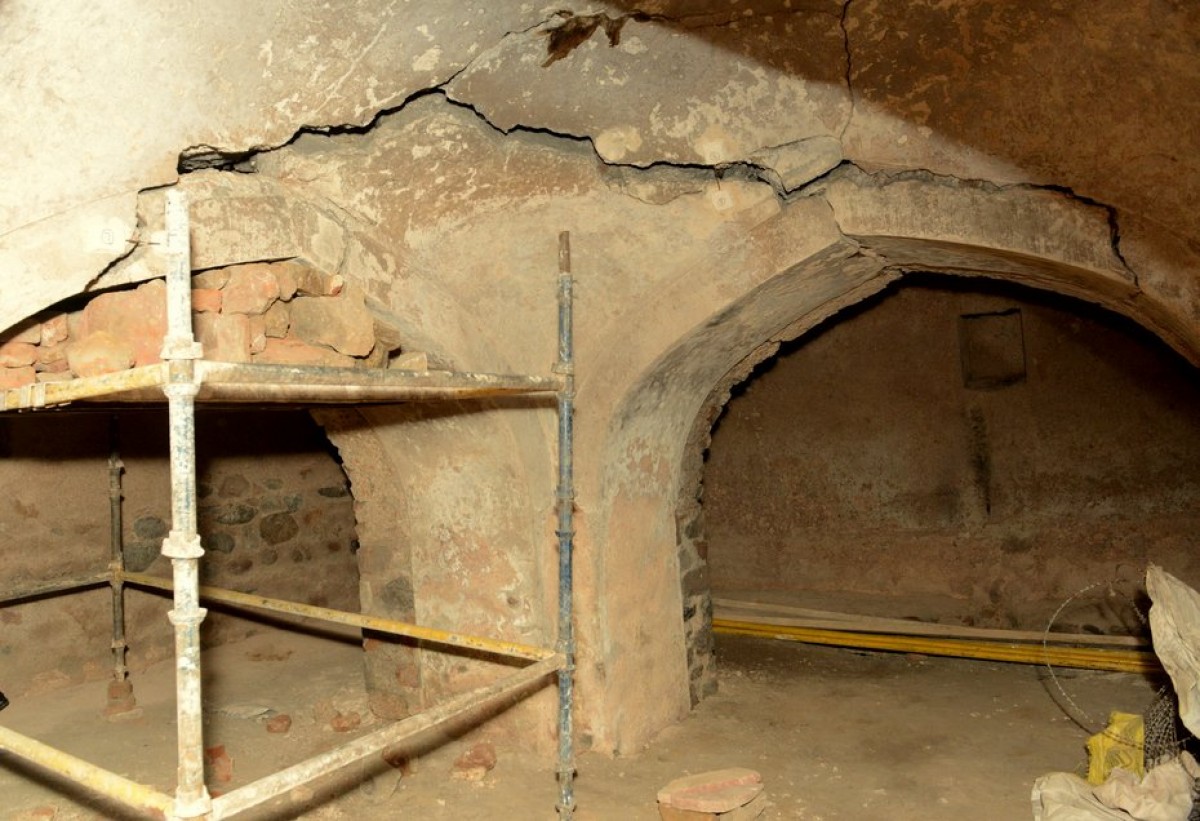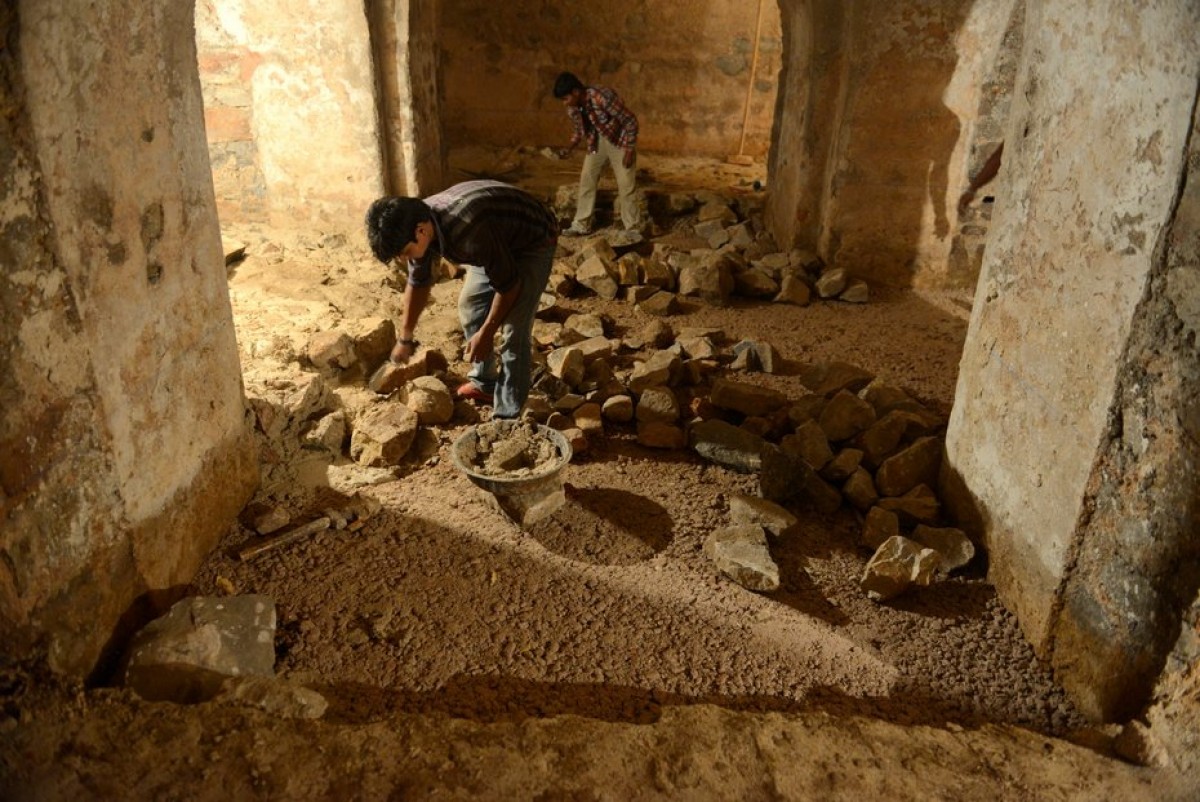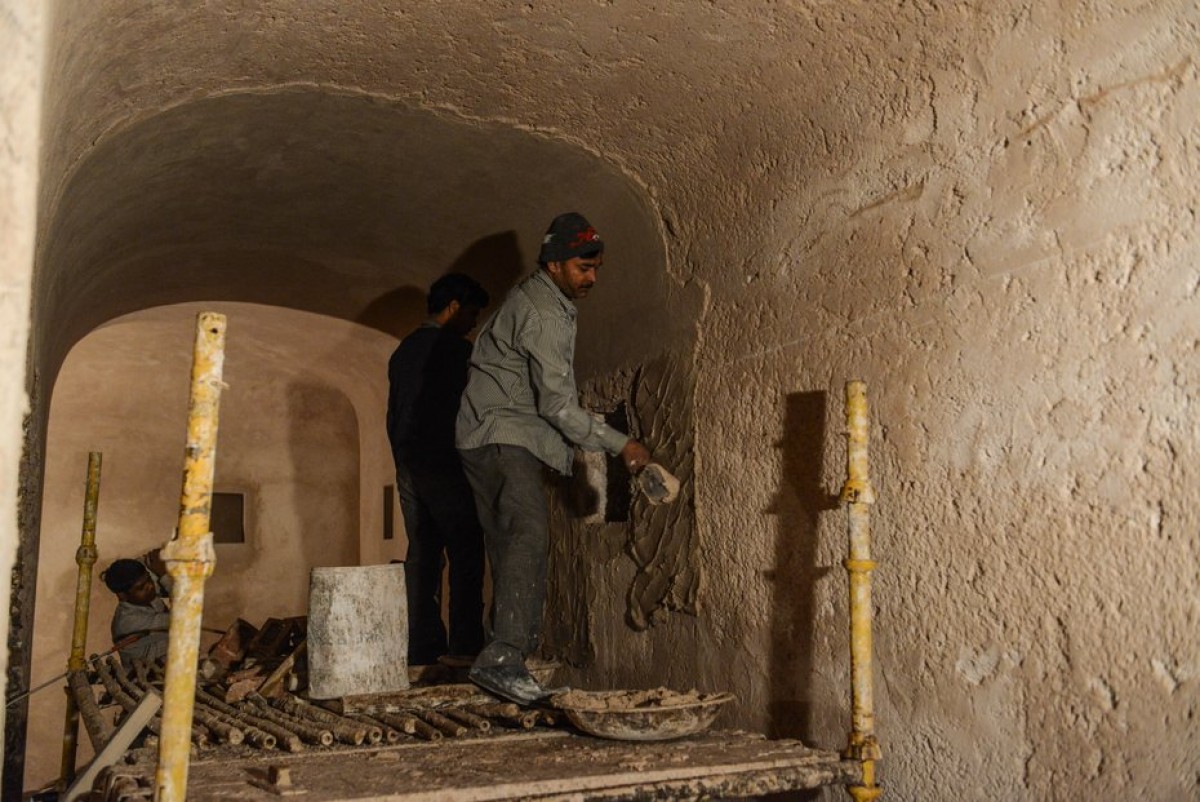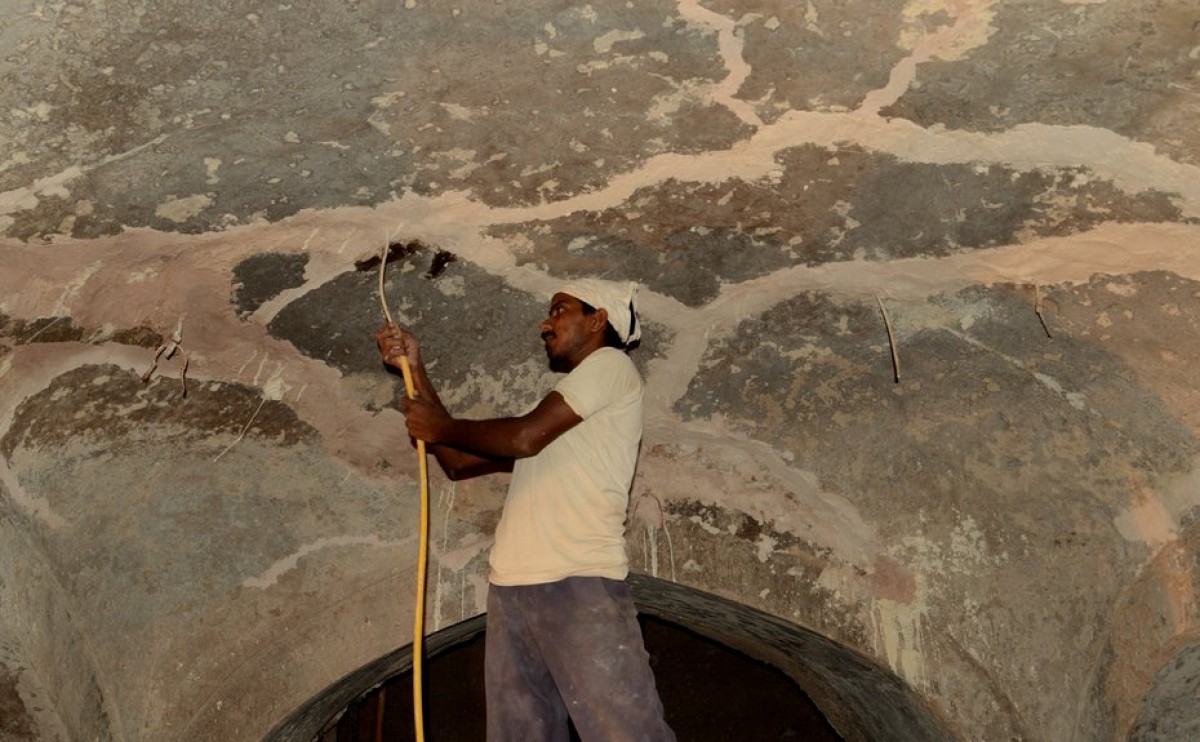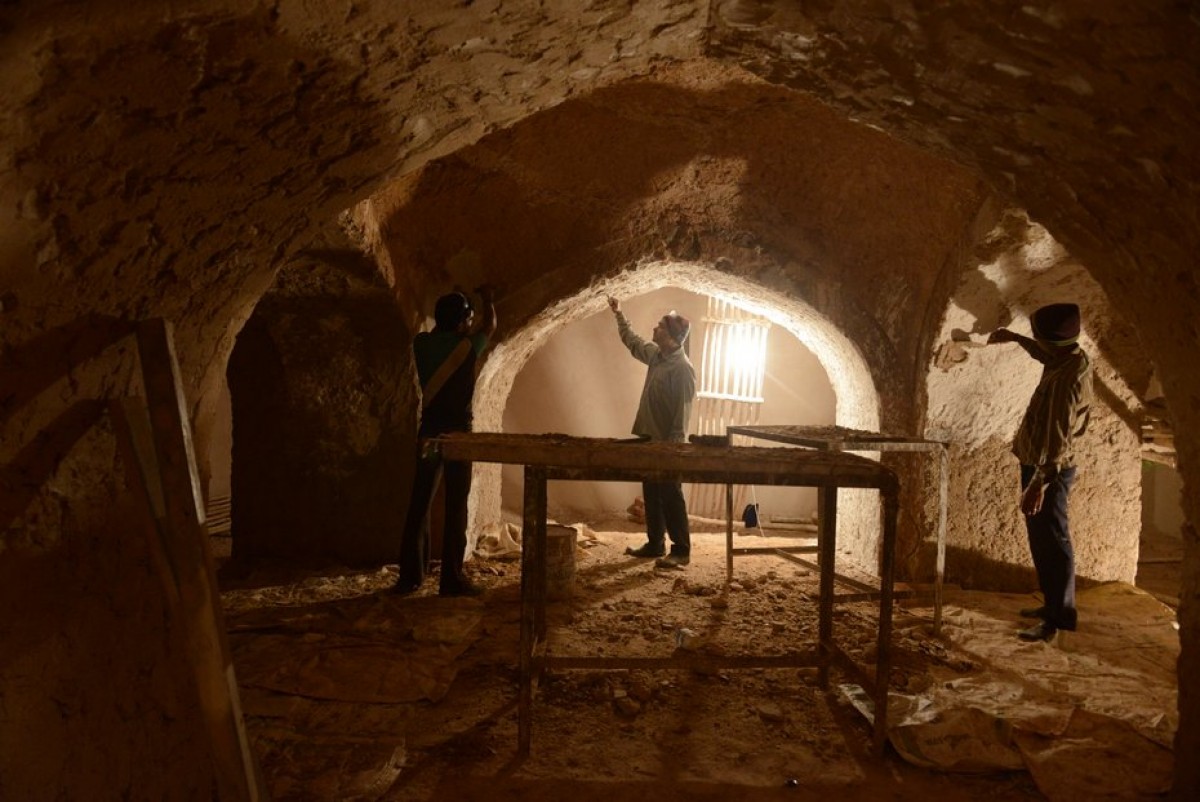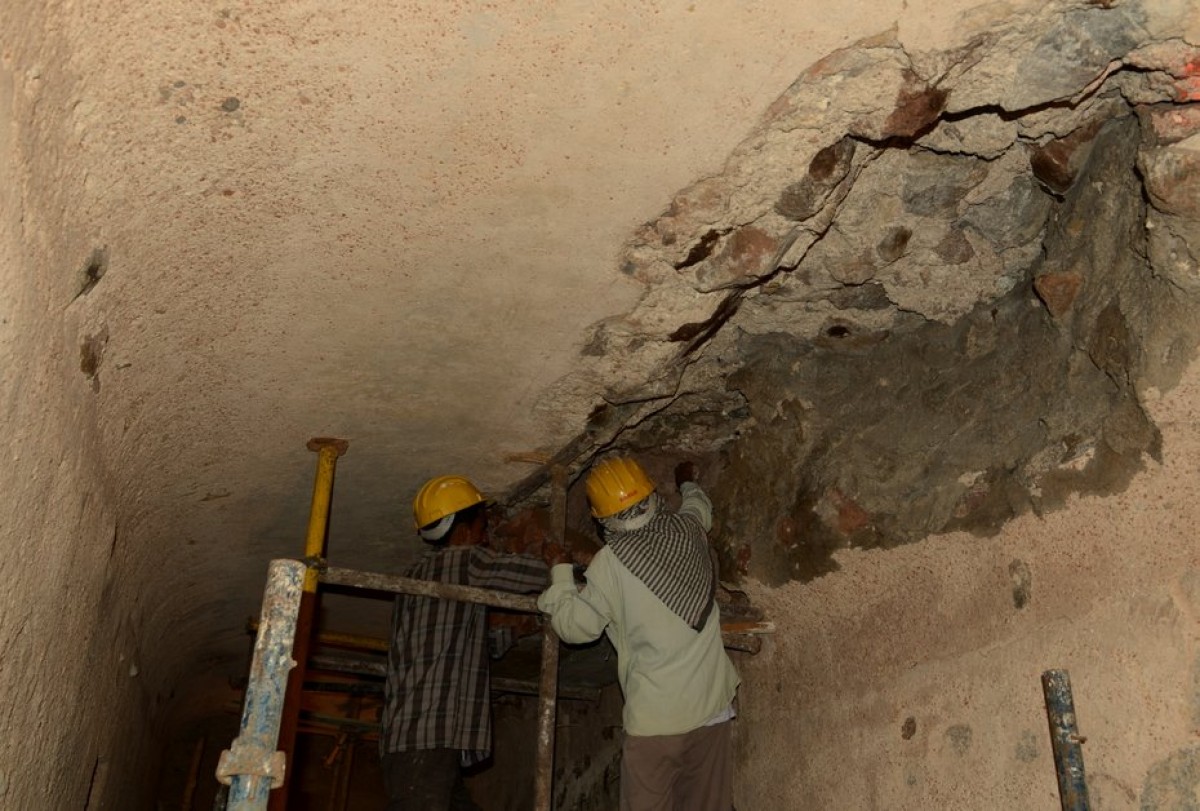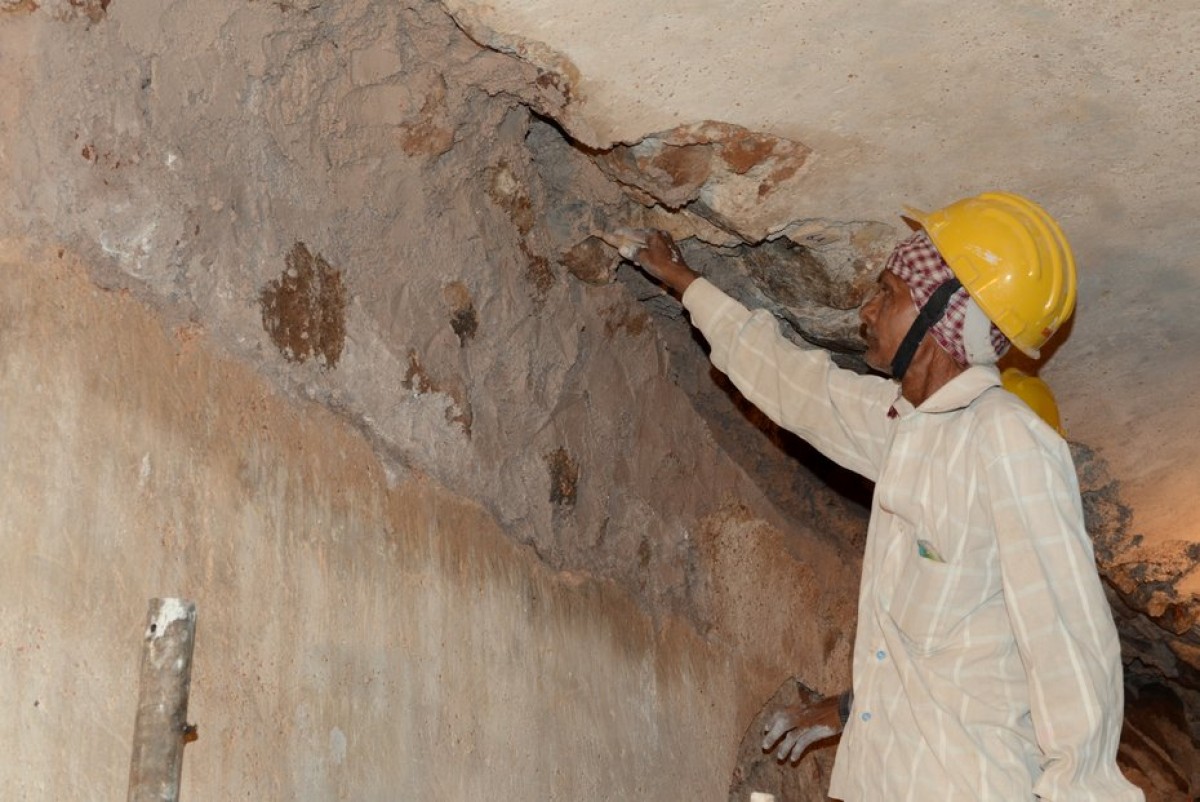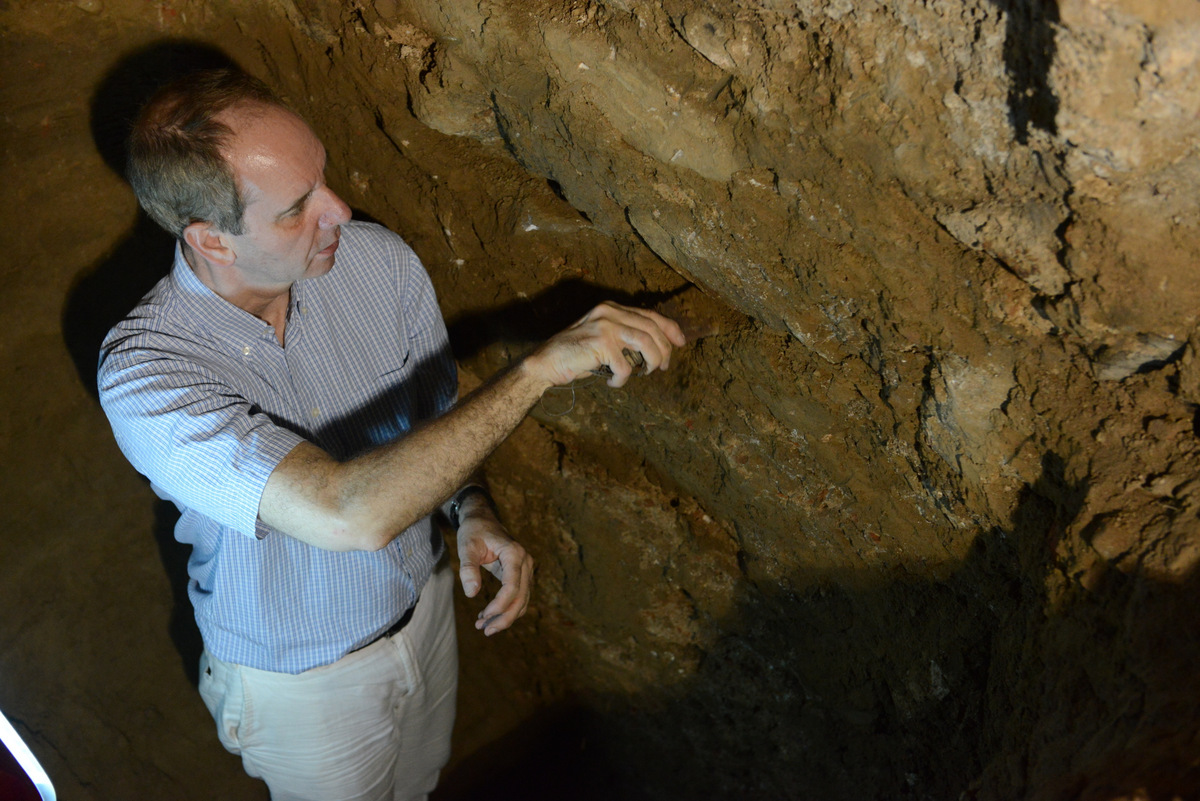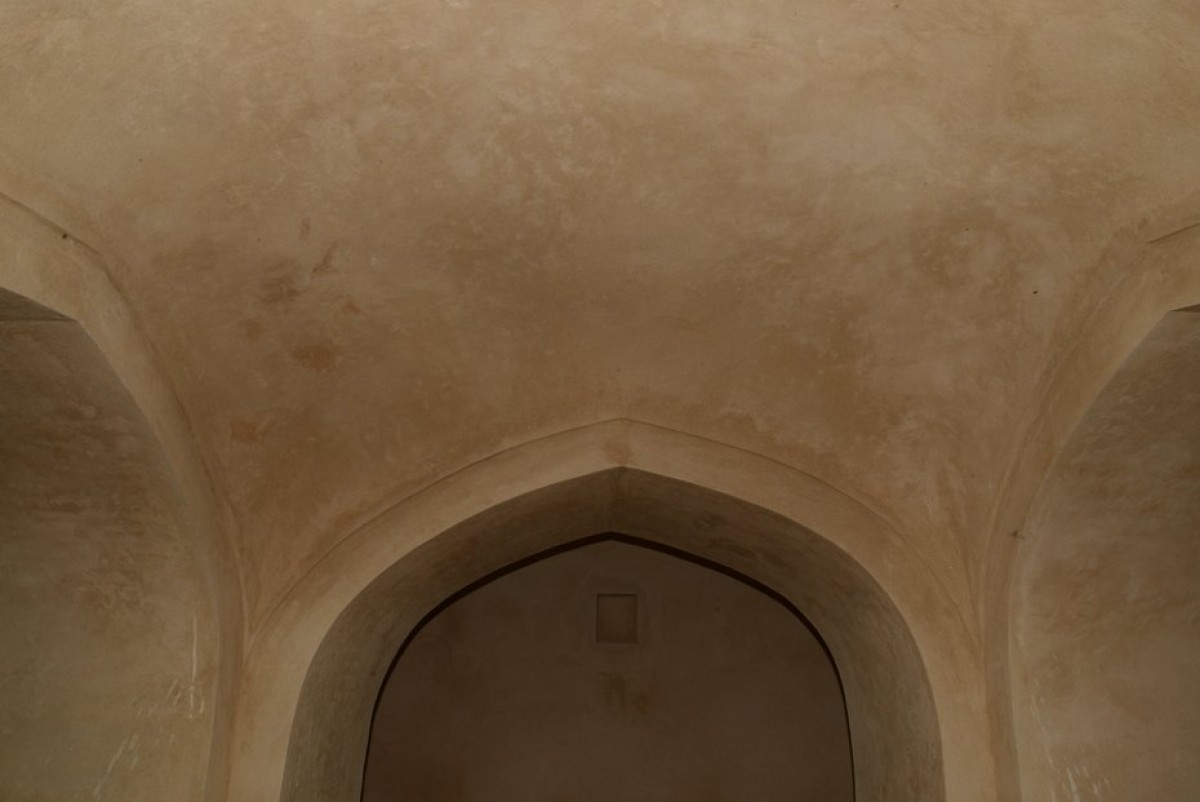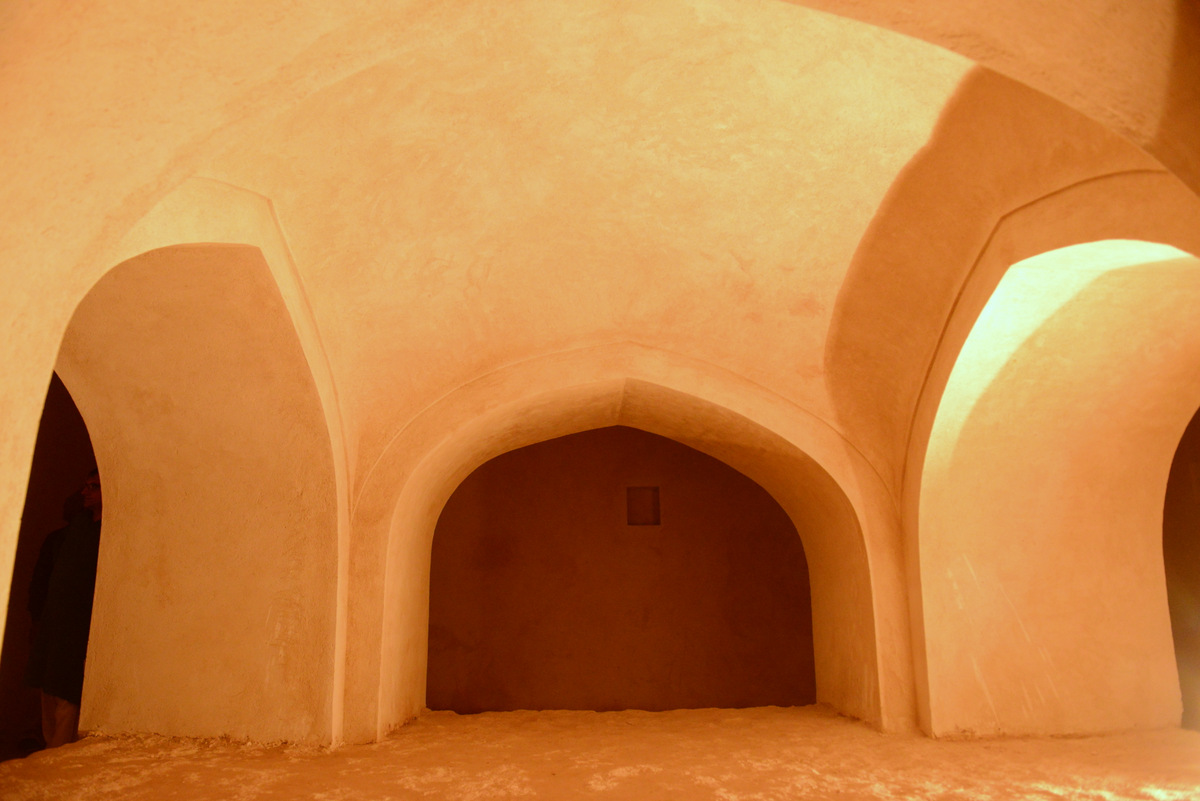
In the centre of the southern facade the central portion, where the arch has now collapsed, leads to steps to the upper terrace on either end – in a manner similar to the later Taj Mahal. Also an arched opening on the platform leading to the steps leads to the grave chamber. Unlike at Humayun’s Tomb the domed chamber is supported on columns and has a circumambulatory passage all around it. Major structural cracks can be seen in the roof of the chamber and heavy settlement of the flooring of the passage – both of which needed emergency repairs to be undertaken on them to ensure structural stability.
The cracks in the crypt were monitored using investigative tell-tales for a period of 6 months prior to the commencement of conservation works. There was no or negligible movement noted, even after two tremors in April 2015.
The base of the circumambulatory passage in the crypt was stabilized with random rubble Delhi quartzite stone masonry to a depth of 5 feet below ground levels. This was required to ‘bridge’ the foundations of the walls of the crypt chamber with the foundations of the arcade. The area was monitored for a further two months for the repair mortars and grouts to gain strength before commencing any other works.
The cracks to the vaults in the crypt were repaired using traditional stitching with stone and lime mortar, to reinstate the compressive action of the structure, and the vaults were rebuilt. The works to the crypt were carried out in a sequential manner to limit the damage to the existing structure. Temporary supports were installed to maintain stability. The structure continues to be closely monitored for any further movement.

























